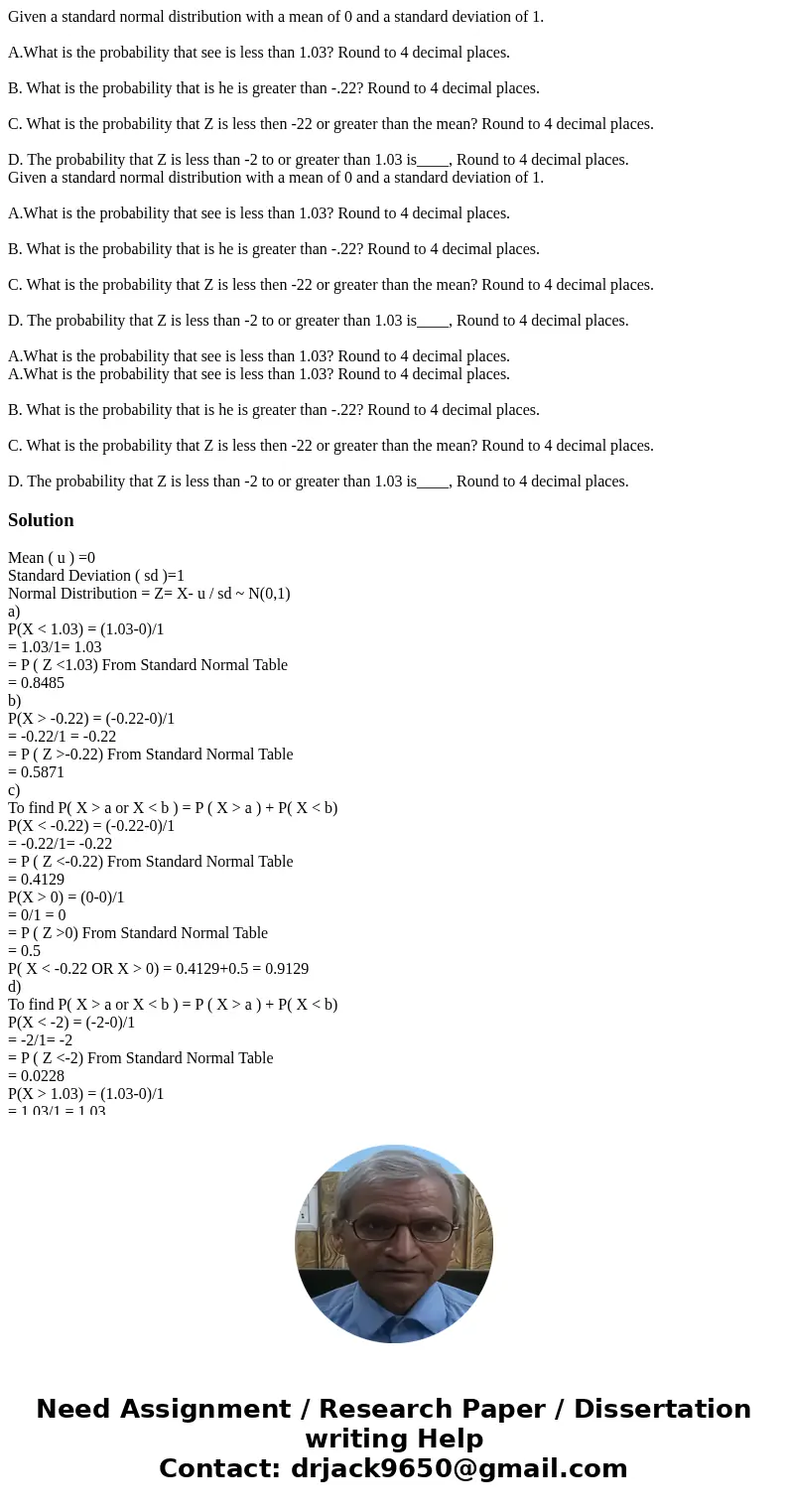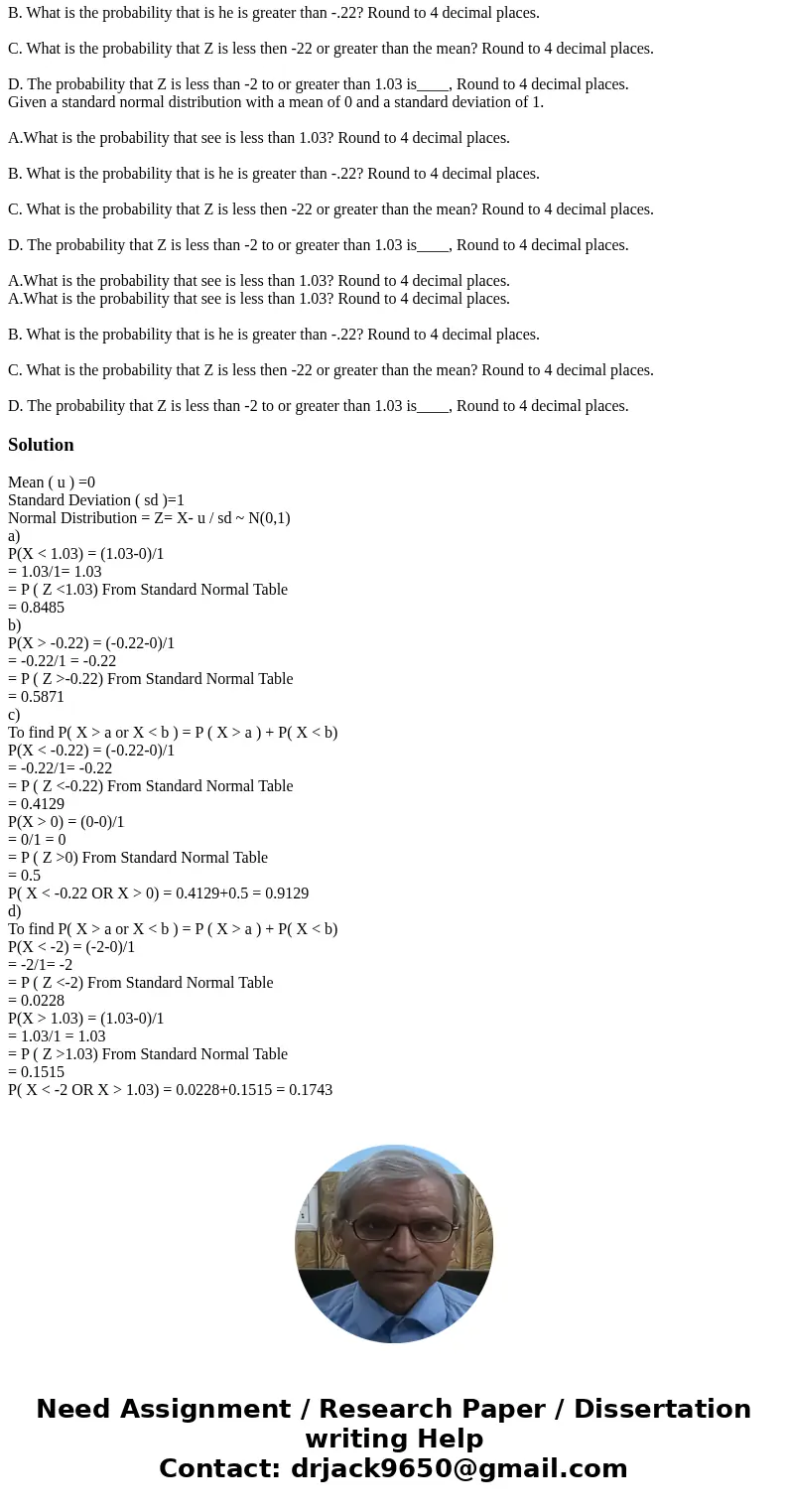Given a standard normal distribution with a mean of 0 and a standard deviation of 1.
A.What is the probability that see is less than 1.03? Round to 4 decimal places.
B. What is the probability that is he is greater than -.22? Round to 4 decimal places.
C. What is the probability that Z is less then -22 or greater than the mean? Round to 4 decimal places.
D. The probability that Z is less than -2 to or greater than 1.03 is____, Round to 4 decimal places.
Given a standard normal distribution with a mean of 0 and a standard deviation of 1.
A.What is the probability that see is less than 1.03? Round to 4 decimal places.
B. What is the probability that is he is greater than -.22? Round to 4 decimal places.
C. What is the probability that Z is less then -22 or greater than the mean? Round to 4 decimal places.
D. The probability that Z is less than -2 to or greater than 1.03 is____, Round to 4 decimal places.
A.What is the probability that see is less than 1.03? Round to 4 decimal places.
A.What is the probability that see is less than 1.03? Round to 4 decimal places.
B. What is the probability that is he is greater than -.22? Round to 4 decimal places.
C. What is the probability that Z is less then -22 or greater than the mean? Round to 4 decimal places.
D. The probability that Z is less than -2 to or greater than 1.03 is____, Round to 4 decimal places.
Mean ( u ) =0
Standard Deviation ( sd )=1
Normal Distribution = Z= X- u / sd ~ N(0,1)
a)
P(X < 1.03) = (1.03-0)/1
= 1.03/1= 1.03
= P ( Z <1.03) From Standard Normal Table
= 0.8485
b)
P(X > -0.22) = (-0.22-0)/1
= -0.22/1 = -0.22
= P ( Z >-0.22) From Standard Normal Table
= 0.5871
c)
To find P( X > a or X < b ) = P ( X > a ) + P( X < b)
P(X < -0.22) = (-0.22-0)/1
= -0.22/1= -0.22
= P ( Z <-0.22) From Standard Normal Table
= 0.4129
P(X > 0) = (0-0)/1
= 0/1 = 0
= P ( Z >0) From Standard Normal Table
= 0.5
P( X < -0.22 OR X > 0) = 0.4129+0.5 = 0.9129
d)
To find P( X > a or X < b ) = P ( X > a ) + P( X < b)
P(X < -2) = (-2-0)/1
= -2/1= -2
= P ( Z <-2) From Standard Normal Table
= 0.0228
P(X > 1.03) = (1.03-0)/1
= 1.03/1 = 1.03
= P ( Z >1.03) From Standard Normal Table
= 0.1515
P( X < -2 OR X > 1.03) = 0.0228+0.1515 = 0.1743


 Homework Sourse
Homework Sourse